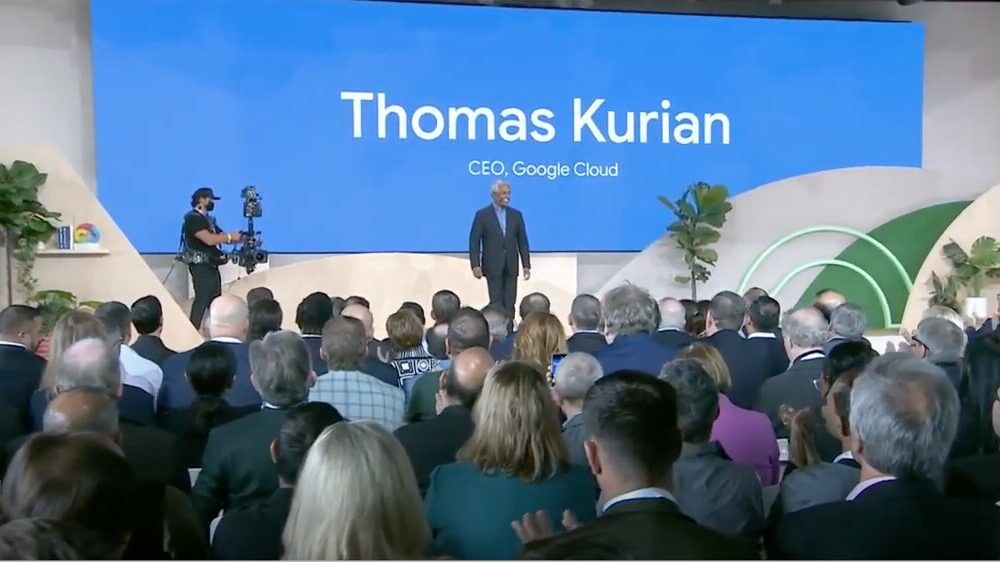
In this year’s edition of your event Next 22held in San Francisco at last in person, Google Cloud has opted to provide more power and possibilities to its Business Intelligence tools. In addition, it has also focused on improving the security of the software supply chain, among other innovations, presented by its CEO, Thomas Kurian.
For example, the plans it has to reinforce its basic infrastructure, such as the opening of new cloud regions in six countries: Austria, Czech Republic, Greece, Norway, Sweden and South Africa. In this way it will have a total of 49 regions shortly, both in operation and in development.
Google Cloud Next 22: Launch of Looker Studio
To reinforce its offer and possibilities of Business Intelligence, Google Cloud has focused on the technology of the Looker platform, which it bought just over two years ago. Thus, the company has decided to unify its Business Intelligence products under the Looker umbrella, combining Looker and Data Studio to form LookerStudiowhich will arrive with several different packages.
One of them, the most advanced, and intended for users who need special support and governance functions, is Looker StudioPro. It will offer management functions for new companies, as well as several team collaboration functions. All this will arrive in a first phase, to which others will be added with new functions that expand the package. Among them, integration with Dataplex for metadata visibility and data lineage.
Looker Studio helps those who need it tackle self-managed analytics. It is compatible with more than 800 data sources, and has a catalog of more than 600 connectors, which makes it easy to explore information. Looker Studio allows you to consult it with just a few clicks and without the need for IT support. In addition to the current capabilities of the tools and services it includes out of the box, Looker Studio will evolve in the future to include a full user interface for working with data modeled in Looker.
As a first step, although still in the testing phase, is access to the Looker Studio data models. This feature allows customers to explore trusted data through Looker’s modeling layer, allowing them to combine both self-managed analytics with data sources arranged specifically for their clients, as well as trusted data that has been previously analyzed and modeled in Looker.
Security for the software supply chain
Google Cloud has also unveiled at its Google Cloud Next 22 event a package of tools aimed at improving the security of the software development process, and therefore, the supply chain of applications and platforms: Software Delivery Shield. It is a suite of fully managed software tools for developers and security and DevOps teams.
The suite includes services that cover five stages of the software development process: application development, software provisioning, continuous integration and continuous delivery, production environments, and policies. Companies and organizations that are going to use it do not have to subscribe to the full package, and can choose only the tools they need.
As part of the package, Google Cloud has announced, still in the testing phase, a new service called Cloud Workstations, which offers complete managed development environments. With it, developers can access various customizable environments through a browser.
For their part, security administrators and IT teams can provision, scale, and manage them on Google Cloud infrastructure. These environments are available with built-in security measures such as VPC Service Controls, private ingress and egress, and forced image updates. Also, it does not store source code locally.
Software Delivery Shield also incorporates the Artifact Registry, which enables DevOps teams to manage and secure artifacts; Cloud Build and Cloud Deploy; and Google Kubernetes Engine and Cloud Run to secure execution environments.
They are not the only security tools launched by Google Cloud at the event. The company has also announced an extension of its Confidential Computing portfolio with Confidential Space. In general, this suite of tools is responsible for keeping the data encrypted when it is processed, which adds the encryption to what Google does when this data is at rest and in transit. As for Confidential Space, it gives data contributors control over how their data is used, and which workloads are authorized to act on it. In this way, it allows you to share sensitive data without putting it at risk.
Another of the security tools presented at Google Cloud Next 22 is Chronicle Security Operations. Its mission is to detect, investigate and respond to online threats. It brings together various functions, such as incident management, as well as security orchestration and automation, and attack response tools that Google has as a response to the purchase of Simplify.
What’s new in Artificial Intelligence and data
Google Cloud has also announced at Next several tools and features designed to make Artificial Intelligence more accessible. To do this, the company is going to expand what it calls AI agentsa category of applications and services that requires little experience in the technological field and is used for specific business needs.
Part of this extension is Translation Hub, an Artificial Intelligence agent that offers clients a self-managed document translation service. It can automatically translate documents into 135 languages. Also Vertex AI Visionan application development environment for creating and deploying computer vision applications.
On the other hand, Google Cloud is working on the development of an open data cloud that unifies data across all possible formats, clouds, and workloads. To do this, Google’s BigLake storage engine will add support for the open source Apache Iceberg table format, with support for the DeltaLake and Apache Hudi formats soon to follow. Additionally, Google is adding support for unstructured data, Apache Spark, and Datastream in BigQuery.
It will also display a new family of virtual machines, C3, which will run on the fourth generation Intel Xeon Scalable processor; and to launch the custom Infrastructure Processing Unit (IPU), co-developed with Intel. On the other hand, the new service dual-rundeveloped from technology developed by Banco Santander, allows customers to more easily migrate their data to the cloud, since among other things it allows them to create a digital cup of their mainframe systems and run them simultaneously on Google Cloud .



